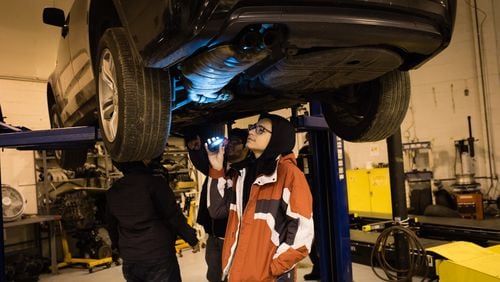Georgia is ahead of many states in providing students with career and technical education options as early as middle school and in offering them industry-recognized credentials in high school.
The next step ought to be seeing how well these efforts have been working.
The state has fallen short in research-based evaluations of its career technical education. Yes, there are anecdotal success stories, but Georgia hasn’t undertaken a rigorous analysis that brings together researchers, policymakers and practitioners and delves into whether CTE programs help students get jobs and fill workforce needs or if gaps exist in which students enroll and what they choose to study.
The Data Quality Campaign, an advocacy group for better use of data to help students and inform families, warns that information about the quality and outcomes of CTE programs, including credentials earned, is limited, leaving students to make important decisions with few facts.
For example, women outnumber men in Georgia's technical college system, 85,642 to 51,566. Yet, a report by the Georgetown Center on Education and the Workforce found postsecondary vocational certificates have limited labor market value for women because of what women study. While men enroll in auto mechanics and HVAC, women are in lower-paying courses in child care and cosmetology.
I asked the Technical College System of Georgia for a breakdown of enrollment by gender and found a marked divide in the 2018 academic year:
In air conditioning technology, there were 54 women, compared to 1,920 men.
In welding and joining technology, there were 348 women, compared to 4,024 men.
In automotive technology, there were 174 women, compared to 2,546 men.
In cosmetology, there were 4,030 women, compared to 162 men.
In early childhood care and education, there were 5,913 women, compared to 299 men.
In health care assistant, there were 13,964 women, compared to 2,203 men.
If it wanted to assess CTE, the state has a resource a few blocks from the Capitol, Georgia State University's CTEx laboratory, which is researching career technical education for Michigan, Massachusetts and Tennessee. The lab has started to work with metro-area school districts on CTE research. They hope to take that research statewide in the future.
Daniel Kreisman, a GSU economics professor and founding director of the lab, recently completed a study with public policy professor Kevin Stange of the University of Michigan that examined what drives vocational enrollment or whether the courses help or harm early careers. They drew from a nationally representative sample of early-career Americans.
In an interview this week, Kreisman said the study found most students taking CTE in high school go to college; it is not the off-ramp to higher education as many believe. The majority of U.S. students take at least one vocational course during high school and about 50 percent of students take the equivalent of one full course each year.
“That you are either a vocational person or a college person is an antiquated notion,” he said. In fact, the study found, among students who enroll in college, each additional course credit from an advanced vocational class increases their chances of graduating by nearly 2%.
The study disputes that vo-tech prepares students for jobs that don’t exist and dead-end careers, or that it’s a dumping ground for struggling learners. Instead, the researchers found advanced level CTE classes give students a leg-up. Students earn about 2 percent more annually for each advanced or upper-level vocational class they take in high school, indicating the labor market sees value in these courses.
Schools should keep vocational education an accessible part of the high school curriculum, but opt for depth over breadth, said Kreisman. He praised Georgia's career clusters and pathways, which expose students to specialized concentrations.
Teens gain insights from vocational coursework about their skill sets and interests, said Kreisman, who experienced that firsthand. A high school drafting course revealed to him that architecture was not a great fit.
“Turned out I was terrible at it,” said Kreisman. “That was a great thing to learn in 11th grade rather than in my second year of college.”







